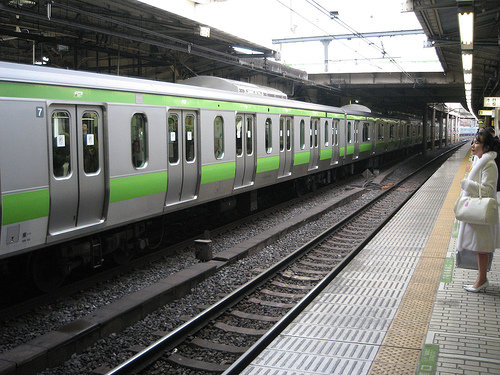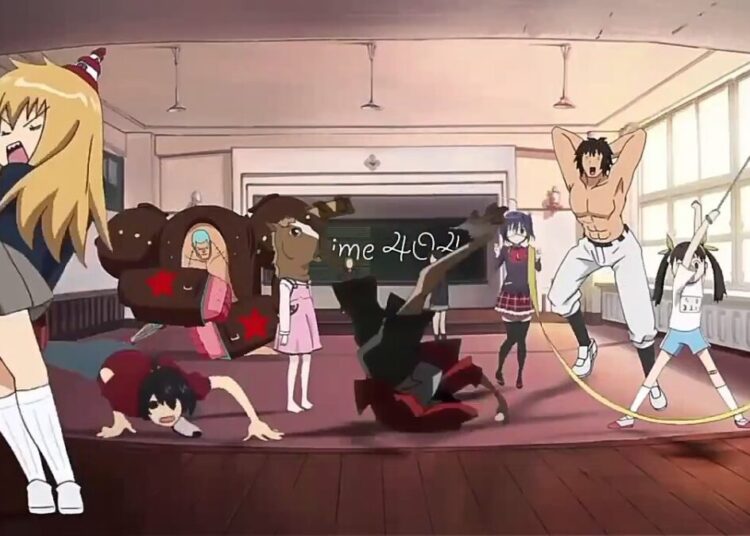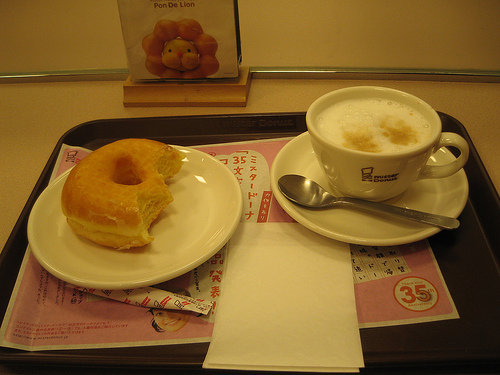I went into Tokyo on business yesterday, and as is often the case, I was amazed that the city is able to function as well as it does with its massive daytime population of 14 million — a whopping 5655 people per square kilometer. Just as New York is comprised of several boroughs, Tokyo is made up of various parts, including 23 wards (ku), 26 cities (shi), and even sections designated as towns and villages (determined by population size), in effect making the metropolitan area operate more as a prefecture than as a city. Although Tokyo has an extensive system of freeways and major roads, driving there is the most stressful thing you can imagine, and I nearly always take trains, since there’s nothing more convenient. The end result of this is that I have no perception of the geographical layout of Tokyo at all, but only think of the city in terms of which train line will get me to Shinjuku or Akihabara. Yesterday I was delayed by the bane of Tokyo train riders, the jinshin jiko, which means “injury accident” but is a polite way of saying that someone decided to end it all by throwing themselves in front of an oncoming train.
One of the things any pop Japanoligist can tell you about are the Japanese traditions of tatemae and honne (TAH-tay-MAH-eh and HON-neh), two concepts which are woven into the fabric of Japan’s society. Tatemae, meaning “facade,” represents the the ideas expressed in public, or the way we pretend society is, while honne is the way we really feel, or the way the world really is. Ever since coming to Japan I’ve heard a lot about kokusai-ka, a word that means “internationalization” and which supposedly represents Japan’s desire to open up to the rest of the world and experience other cultures and new ways of solving problems. Frankly, I’ve always felt that this was a prime example of tatemae in action — something that sounds good in a newspaper article but is meaningless in practice — since the average Japanese, just like the average American or Korean or Frenchman, has a natural tendency to believe that the way things are done in their country is intrinsically better than anywhere else. However, I was surprised to find a little honne after all, when my daughter told me the kinds of international foods they’ve been dishing up at lunchtime at her public elementary school: Korean bibinbap rice bowl, Indian kima curry with naan, Italian focaccio bread, French mille-feuille for dessert, and so on. The idea is to improve the kids’ minds by exposing them to various foods from around the world, and I think it’s a great one.
Sadly, one of the major economic themes of Japan today is the triumph of inefficiency. When you drive past road construction, there are sure to be several men whose job it is to stand by the road with orange flashlights, ostensibly directing traffic even though everyone ignores them. Then there are the ever-present “parking old men” who do nothing more than stand in parking lots and direct you to a parking spot that you could have easily found yourself. Japan is a very cash-centric country, and personal checks (or cheques, for our European readers — internationalization!) don’t exist here at all. When individuals or businesses need to send money to someone, they usually go to the bank and execute a manual bank transfer (furikomi), paying a $6 fee to the bank for this privilege. And just today I saw another classic example of inefficiency: people who are paid to sit by the side of the road and click a clicker as cars drive by, to count the numbers of cars using a given road at a set time. Japan is supposed to be a technically advanced country, so why don’t they come up with a high-tech device that can do this?
Just a heads up: J-List stocks virtually every PC dating-sim game in English, including older classics like the Himeya games, Hobibox’s Viper series and Love Love Show, and the collection of three classic games by G-Collections, DOR. Several games are close to selling out, so if you’re a collector of Japan’s unique H-games, you might consider picking them up before they go.
















